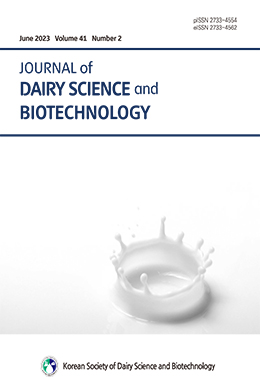In this study, we explored the synergistic effects of whey protein concentrate (WPC) and soybean protein components after fermentation with lactic acid bacteria isolated from kimchi, and identified several peptides with desirable physiological functions, proteolysis, and immune effects. Antioxidant activity was determined using 2,2'-azino-bis-3-ethylbenzothiazoline- 6-sulphonic acid, 1,1-diphenyl-2-picrylhydrazyl, ferric-reducing antioxidant power, and hydroxyl radical scavenging assays, followed by cross-validation of the four antioxidant activities. These assays revealed that samples with a 8:2 and 9:1 whey to soy ratio possessed higher antioxidant activity than the control samples. Antibacterial potency testing revealed high antibacterial activity in the 9:1 and 8:2 samples. Cytotoxicity testing of samples using 3-(4, 5-dimethyl thiazol-2-yl)-2, 5-diphenyl tetrazolium bromide revealed that only the 10:0, 1:9, and 0:10 samples had <80% viable cells, indicating no significant cytotoxicity. Nitric oxide (NO) assays revealed that NO expression was reduced in 8:2, 5:5, and 0:10 protein ratio fermentations, indicating low inflammatory reaction stimulatory potential. Cytokine expression was confirmed using an enzyme-linked immunosorbent assay kit. The 8:2 sample had the lowest inflammatory cytokine (interleukin [IL]-1α, IL-6, and tumor necrosis factor-α) levels compared with the lipopolysaccharide-treated group. Amino acid profiling of the 8:2 sample identified 17 amino acids. These results suggest that inoculating and fermenting Lactobacillus plantarum DK203 and Lactobacillus paracasei DK209 with an 8:2 mixture of WPC and soybean protein releases bioactive peptides with excellent anti-inflammatory and antioxidant properties, making them suitable for functional food development.




